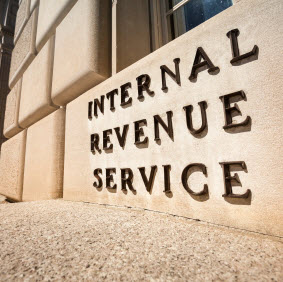
The IRS recently issued a memorandum entitled, “Interim Guidance for Report of Foreign Bank and Financial Accounts (FBAR) Penalties.” As explicitly stated in the memorandum, its purpose is to improve the administration of the IRS’s FBAR compliance program. How so? By implementing new procedures. This guidance affects two specific IRMs: 4.26.16 and 4.26.17.
For those who thought that the IRS might have waited a couple months before making these procedures effective so as to allow tax practitioners sufficient time to get up to speed and to work out any “kinks,” that was wishful thinking. Far from enacting a “grace period,” these new procedures went into effect the very day they were published, which just so happened to be May 13, 2015. Thus, this guidance is effective immediately and applies to all open cases where the FBAR penalty is considered.
Of particular interest to readers are sections (2) and (3), pertaining to the “Penalty Amount” for willful and nonwillful violations, respectively. They can each be found below.
(2) Penalty Amount for Willful Violations
For each year for which it is determined that there was a willful violation, examiners must fully develop and adequately document in the examination workpapers their analysis regarding willfulness. The examiner’s report should clearly state the years for which it was determined that an FBAR violation was willful.
For cases involving willful violations over multiple years, examiners will recommend a penalty for each year for which the FBAR violation was willful. In most cases, the total penalty amount for all years under examination will be limited to 50 percent of the highest aggregate balance of all unreported foreign financial accounts during the years under examination. In such cases, the penalty for each year will be determined by allocating the total penalty amount to all years for which the FBAR violations were willful based upon the ratio of the highest aggregate balance for each year to the total of the highest aggregate balances for all years combined, subject to the maximum penalty limitation in 31 U.S.C. § 5321(a)(5)(C) for each year.
Example: Assume highest aggregate balances of $50,000, $100,000, and $200,000 for 2010, 2011, and 2012, respectively. The total penalty amount is $100,000 (50 percent of the $200,000 highest aggregate balance during the years under examination). The total of the highest aggregate balances for all years combined is $350,000. The penalty for 2010 is $14,286 ($50,000/$350,000 x $100,000). The penalty for 2011 is $28,571 ($100,000/$350,000 x $100,000). The penalty for 2012 is $57,143 ($200,000/$350,000 x $100,000). The penalty amounts for each year are subject to the maximum penalty limitation in 31 U.S.C. § 5321(a)(5)(C).
Examiners may recommend a penalty that is higher or lower than 50 percent of the highest aggregate account balance of all unreported foreign financial accounts based on the facts and circumstances. In no event will the total penalty amount exceed 100 percent of the highest aggregate balance of all unreported foreign financial accounts during the years under examination. The examiner’s workpapers must support all willful penalty determinations and document the group manager’s approval.
(3) Penalty Amount for Nonwillful Violations
For most cases involving multiple nonwillful violations, examiners will recommend one penalty for each open year, regardless of the number of unreported foreign financial accounts. In those cases, the penalty for each year will be determined based on the aggregate balance of all unreported foreign financial accounts, and the penalty for each year will be limited to $10,000.
For some cases, the facts and circumstances (considering the conduct of the person required to file and the aggregate balance of the unreported foreign financial accounts) may indicate that asserting nonwillful penalties for each year is not warranted. In those cases, examiners, with the group manager’s approval after consultation with an Operating Division FBAR Coordinator, may assert a single penalty, not to exceed $10,000, for one year only. The examiner’s workpapers must support such a penalty determination and document the group manager’s approval.
For other cases, the facts and circumstances (considering the conduct of the person required to file and the aggregate balance of the unreported foreign financial accounts) may indicate that asserting a separate nonwillful penalty for each unreported foreign financial account, and for each year, is warranted. In those cases, examiners, with the group manager’s approval after consultation with an Operating Division FBAR Coordinator, may assert a separate penalty for each account and for each year. The examiner’s workpapers must support such a penalty determination and document the group manager’s approval.
Original Post By: Michael DeBlis


















Recent Comments